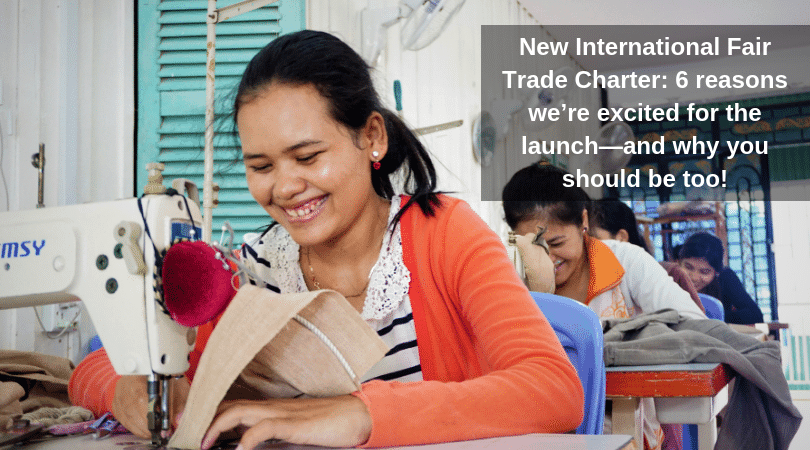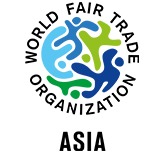
On September 25, WFTO, Fairtrade International and the Fair Trade Advocacy Office will oversee the official release of the new International Fair Trade Charter. Capturing the breadth and depth of Fair Trade globally, the Charter synthesises a diversity of voices and approaches into one easy-to-read document. Fair Trade’s core principles are at the heart of the Charter, which serves to reaffirm the Fair Trade philosophy and renew the push towards equitable trade.
Ahead of the unveiling, we’re taking a closer look at the Charter to find out what it means for the Fair Trade movement, and why it’s significant for WFTO Asia Members and fans. At the end of this post, you’ll find more information about getting involved with the launch.
One document; one vision
The new Fair Trade Charter gives a common voice to the global Fair Trade movement. It draws on expert knowledge from Fair Trade pioneers—including academics, researchers and practitioners—with plenty of input from grassroots organisations and other stakeholders, too. The development of the Charter is driven by two of the largest and longest-running Fair Trade bodies, WFTO and Fair Trade International. But it’s not tied to any one particular organisation or mandate, and it won’t be used as a tool for setting standards or measuring efficacy. The Charter won’t replace WFTO’s Guarantee System. Instead, it will act as a touchstone document for Fair Traders of all shapes, sizes and affiliations.
Once released, the Charter will be available in several different languages. Members and supporters are encouraged to make the PDF available for download through their own websites.
Bringing Fair Trade into 2018
Replacing the 2009 Charter of Fair Trade Principles, the Charter represents the first new foundational document in almost a decade. Fair Trade’s basic philosophy and core principles might remain the same—but the world has changed significantly since 2009. The new Charter considers how Fair Trade principles translate in a world with dynamic trade systems, new communication channels, new challenges, and new global goals for sustainable development. The new Charter future-proofs Fair Trade and reaffirms the movement’s relevance.
Fair Trade as a solution to global issues
The release of the new Fair Trade Charter on September 25 is timed to coincide with another important milestone: The third anniversary of the Sustainable Development Goals (SDGs). This is no coincidence. The new Charter considers the SDGs and how Fair Trade can be applied to solve some of the world’s biggest challenges—notably gender and economic inequality, environmental degradation, poverty, and food insecurity. Fair Trade can be used as a tool to help states meet and exceed the SDGs and achieve the overarching goal of “ending poverty in all its forms, everywhere” by 2030.
Formulating the new Charter has provided an opportunity to reflect on the mounting body of research that illustrates Fair Trade’s positive impact. In communities all around the world, Fair Trade is being used as a force for income security, worker’s empowerment, cultural preservation, and resilience against climate change.
Extending reach; amplifying voices
Building on the successes of Fair Trade forerunners, the Charter reiterates that businesses of all shapes and sizes can and should embrace Fair Trade principles. It signifies an opportunity for renewed collaboration with our allies, both within and beyond Fair Trade—including members of the solidarity economy and organic food movement, but also government bodies, NGOs, universities, and many more. Diversity is one of Fair Trade’s greatest strengths, and the new Charter invites a plurality of voices to contribute in driving the movement forward.
In the lead up to the launch, individuals and organisations are being invited to formally recognise the new Fair Trade Charter. So far, more than 200 have shown their commitment.
Engaging consumers
Written in terms that everyone can understand, the new Charter aims to further extend the reach of Fair Trade by engaging people outside the movement—including consumers. With demand for increased supply chain transparency and alternative forms of trade growing year on year, the launch couldn’t have come at a better time. One of the main goals of the Charter is to act as a single reference point in defining what Fair Trade means. Galvanising public awareness and recognition around Fair Trade will help producers extend their reach even further.
More than 4,000 grassroots organisations representing 2.5 million workers in 70 countries are currently represented under WFTO and Fairtrade International. The new Charter also acts to encourage inter-organisational collaboration, connect grassroots movements with global bodies, and link consumers with producers.
Fair Trade is something to celebrate!
At WFTO Asia, we love any excuse to celebrate Fair Trade and recognise the achievements of our Members. On September 25, a range of special events will take place in cities across the world and online to celebrate the Charter launch—shining a spotlight on Fair Trade and the hardworking producers who make the movement what it is.
Get involved with the International Fair Trade Charter launch…
Here’s your chance to be a part of Fair Trade history!
WFTO Asia Members: Recognise the new charter by completing this online form.
Ask NGOs, government organisations and other organisations in your network to recognise the Charter by sending them this letter.
Individual supporters: Endorse the charter by supplying a short quote in response to the statement: “Why I support the new International Fair Trade Charter”. Please email your responses to [email protected]
Everyone: Spread the word about the new Charter by posting on social media, publishing a blog on your website, or sending out a press release. WFTO will make a range of communication resources available online closer to the date.
If you’re planning to hold an event for the Charter launch, tell us about it so we can share it with our networks! And don’t forget to follow WFTO Asia and WFTO on social media in the lead up to September 25 for updates and live streams about the new Charter and launch activities.
